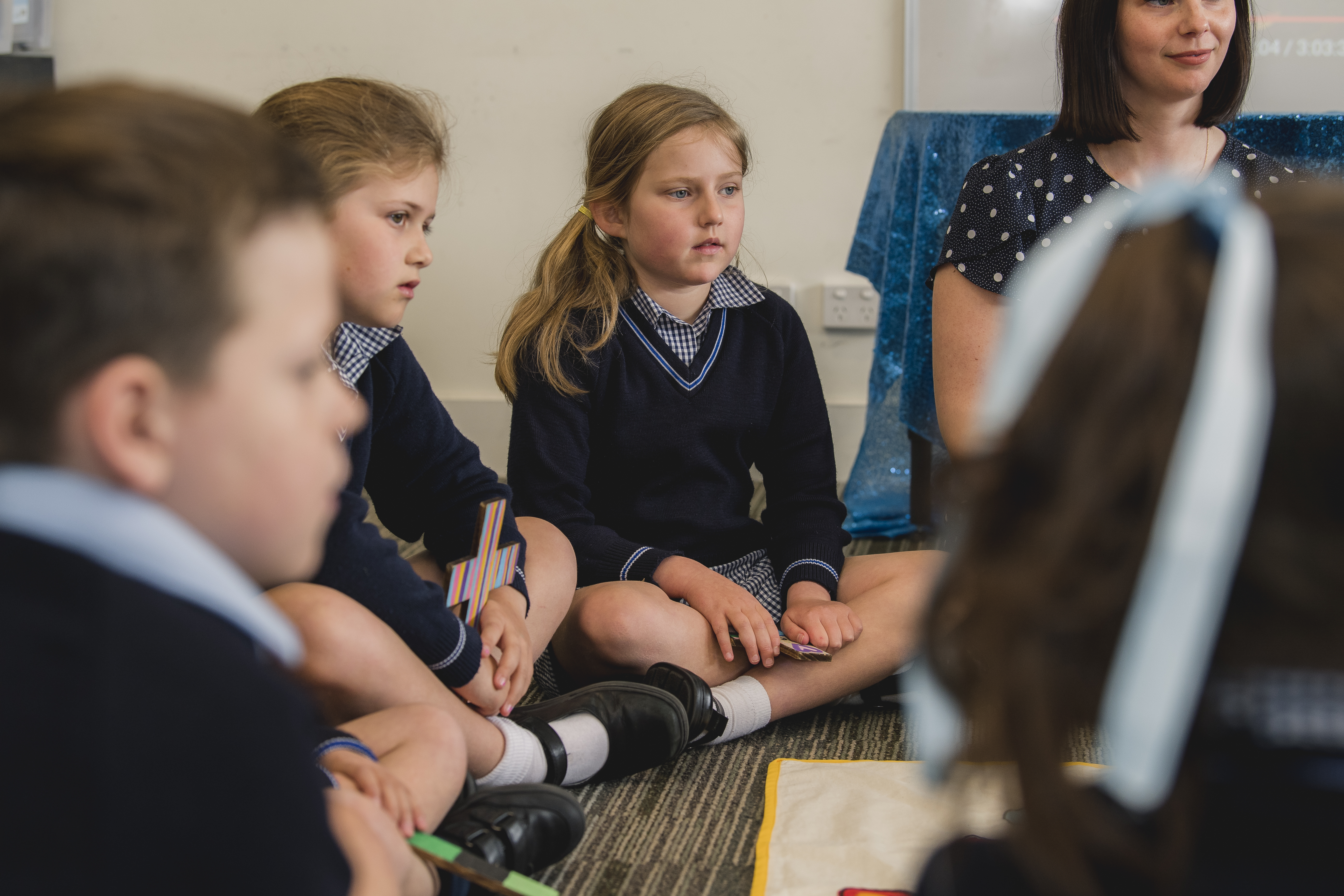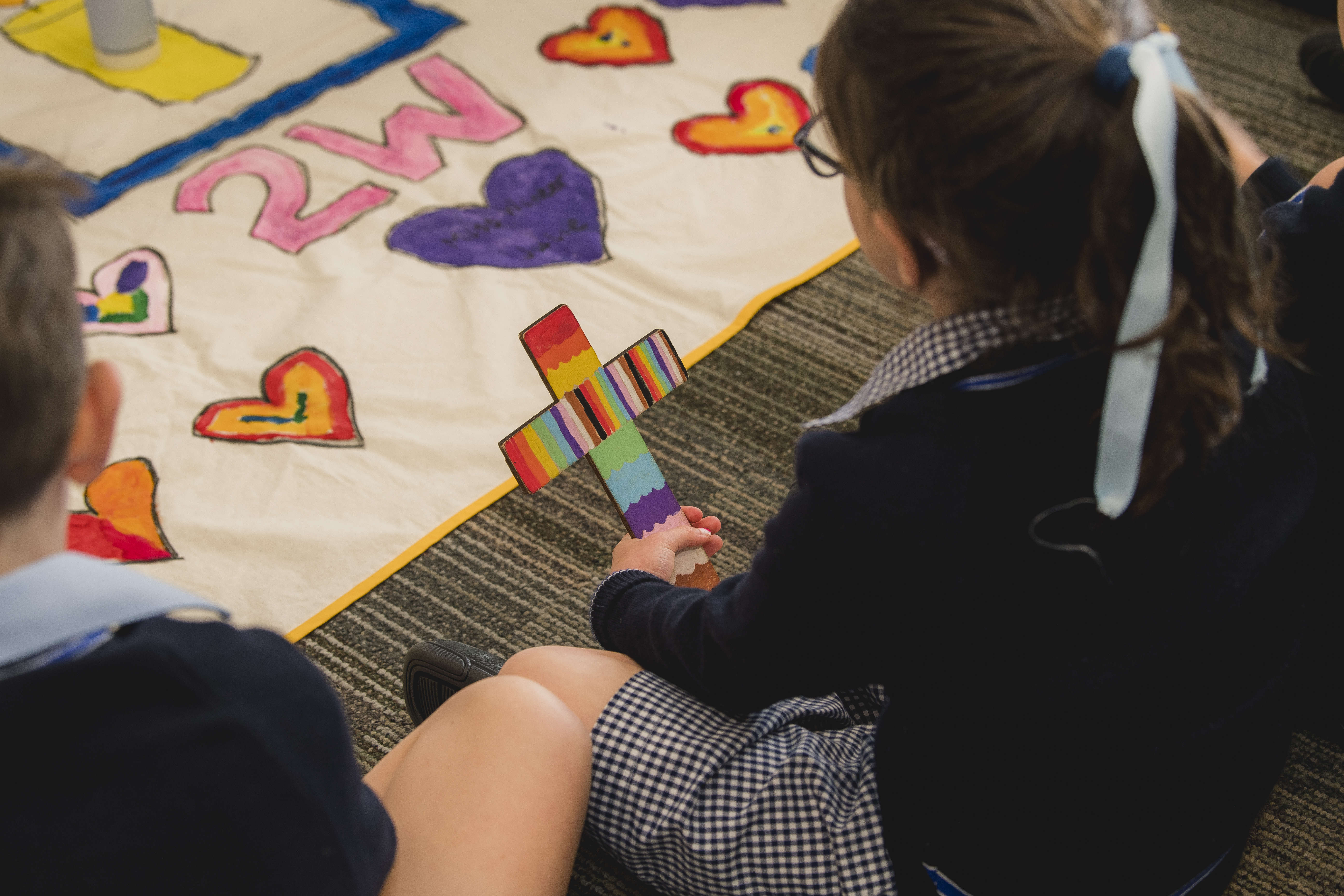Starting a brand-new school year can feel like an uphill battle. With so many things to remember, it’s normal for parents to feel the pressure as they try to start the year off right to make sure their child is set up for the months ahead.
The good news is that with the right tips and a little perseverance, you can create a smooth transition for your child as they start 2023 with St Mary’s. These tips will make an enormous difference to your child’s learning outcomes and attitude towards school, helping them feel more comfortable and confident in beginning a new year.
‘Focusing on self-compassion avoids the need to be anything more than someone who is trying, and gives us the heart to try again’.
The Seven-Day Soul’ Susanna Healy, 2019

1. Create a Routine

A routine has many benefits in helping your child feel prepared and relaxed as they take on the day. This routine can also follow through to after-school, which can help them set specific times to wind down from the school day and have time to do their homework. It’s all about creating a balance, and a routine is a perfect way to do that.
Reflect on some practices you and/or your child may wish to ‘start’, ‘stop’ and ‘maintain’ throughout the day. By listing these out, you and your child can help the school mornings and after-school time go smoothly with minimum fuss – and this also means reduced stress levels all around.
Here are some ideas to help with establishing a routine:
- Pack lunches the night before.
- Lay out their school uniform so it’s ready to put on.
- Organise the essentials in their backpack.
- Have an idea of what breakfast they’ll have in the morning.
- Make an after-school chart with dedicated times to help them organise when to do homework, eat a snack, have dinner, wash up, etc.
2. Practice Punctuality

Making sure your child is at school ‘on time’ ensures they have time to get organised and settled for the day. The most important teacher modelling takes place at the start of the day, which is why it’s crucial for your child’s learning and well-being to be on time.
Students find it stressful if they arrive late to class. They’ll often feel unsure of what to do, which can be quite overwhelming – and this can lead to a lack of focus as they’re too busy feeling worried about being late and having missed out on the beginning of class.
Arriving on time ensures your child is ready to start their class, and it minimises disruption to learning that can have a negative impact. You may find the accompanying article by Michael Grose helpful.
3. Learn and Read at Home

Setting a consistent approach to completing ‘out of school learning’ in an environment that is conducive is also essential to starting the year off right.
All schools emphasise the importance of reading as an integral element of children’s home learning, from Foundation to Year 6. While children in the junior part of primary school are generally ‘learning to read’, students that are further advanced should be ‘reading to learn’.
Here’s how you can navigate learning and reading at home:
- Take time to sit down and chat with your child about their work and learning daily.
- Engage in optimistic perspectives and conversations with your child. Ask them questions such as, ‘What’s something you discovered today that you found interesting?’ or ‘Which subject did you find the most challenging today?’
- If your child had a difficult day, ask their teacher for recommendations on ways you can engage and support your child in certain areas while at home.
Sometimes your child can face a challenge or a difference in opinion at school that can affect how they approach their home learning. In these cases, ask them to strive to walk in the shoes of the other person. This is an effective way to shift their perspective and foster empathy, allowing them to refocus their energy on learning at home.
4. Be Responsible for Belongings

Another important part of starting the year off strong (and continuing it throughout 2023) is ensuring your child understands the need to take responsibility for their belongings at school.
Take these steps to help your child learn to be responsible for their belongings:
- Make sure your child’s name is on all items, including their uniform, lunch box, drink bottle, and other necessary items brought from home.
- Teach your child the importance of taking care of their belongings, as well as the importance of having respect for others’ belongings.
- To help them remember their belongings for school, ask them to have a place for everything. Perhaps they’ll store their books in a certain drawer, stationery in another, clothes in a particular spot in the closet, and so on.
Most schools strongly discourage children from bringing personal belongings to school other than a specified item requested by their teacher. Items brought to school for this purpose should be given to the teacher at the start of the day and collected before going home. Also, most schools take no responsibility for damage or loss to the personal belongings of students.
5. Establish a Yearly Motto

Having a motto to refer to from early on can help your child establish a positive, balanced attitude to the year. They can also remind themselves of their chosen motto whenever they’re feeling stressed, which helps them relax and regulate their emotions.
One of my favourite mottos is, ‘Compare ourselves to who we were yesterday and not to who someone else is today’.
This motto provides students with a wonderful strategy to achieve their goals and strive to be the best they can be, no matter what they face throughout the day.
6. Have a Growth Mindset

A growth mindset is about believing you can achieve anything with dedication and perseverance. This type of mindset is an excellent strategy when starting school because it reminds children that they can do whatever they put their minds to by putting in the effort and rewarding themselves for doing so.
Encourage your child to apply these tips to help develop a growth mindset:
- Tell yourself, ‘I can’t do it, yet’, to remind yourself that you can always achieve your goals if you do the work and remain positive.
- Thrive from setbacks by using them as an opportunity to learn and grow from the experience. We learn more from our failures than our successes!
- On that note, replace the word ‘failing’ with ‘learning’ to help remind yourself that failure is just a new way of learning something new and growing from it.
All of these tips to establish a growth mindset help to cultivate good self-esteem in the short and long term.

With these six tips in your repertoire, you and your child can set yourselves up for a successful, enjoyable, and more positive start to the year at school and home. You can feel more confident about taking on each day, creating a smoother transition into 2023.
Mr Shane Tobin
Principal
